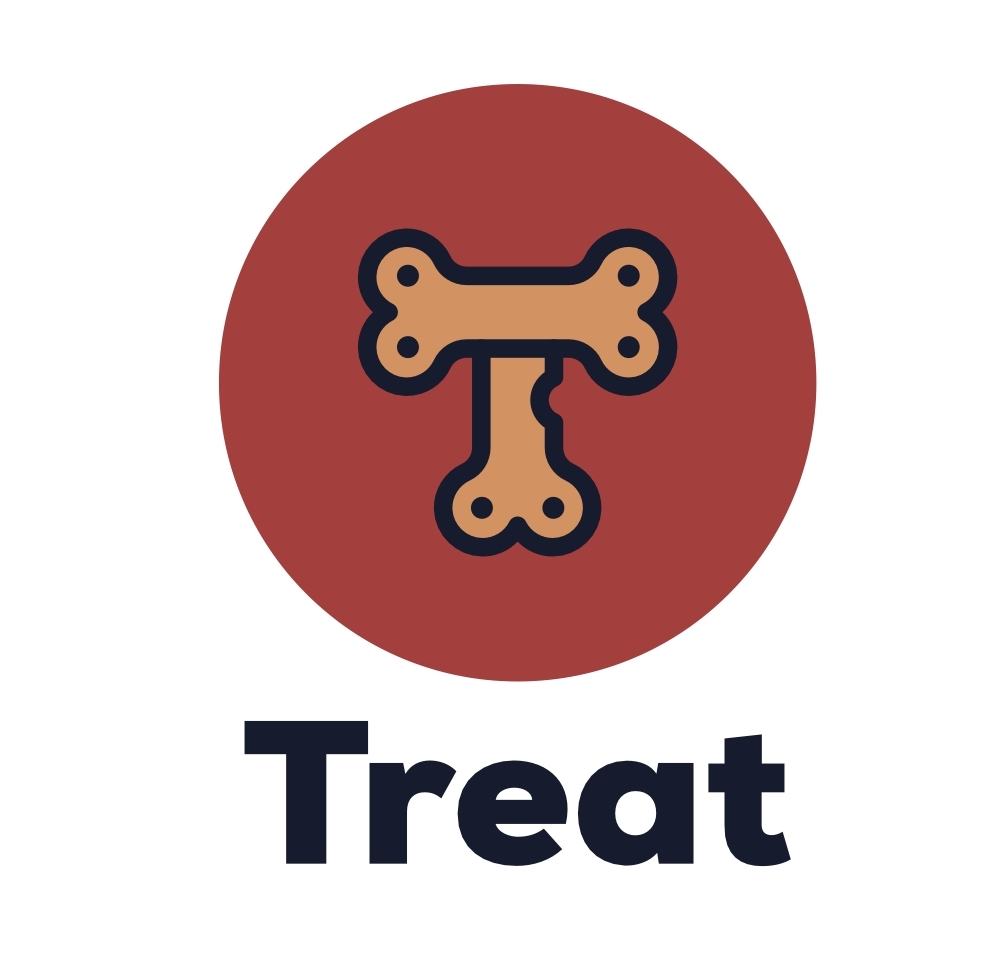
Giá TreatTREAT
VND
Đã niêm yết
$0.001510VND
+5.66%1D
Giá Treat (TREAT) tính theo là $0.001510 VND tính đến 15:15 (UTC) hôm nay.
Chuyển đổi TREAT sang VND
TREAT
VND
1 TREAT = 0.001510 VND. Giá hiện tại để chuyển đổi 1 Treat (TREAT) sang VND là 0.001510. Tỷ giá chỉ mang tính tham khảo. Vừa mới cập nhật.
Bitget cung cấp phí giao dịch thấp nhất trong số các sàn giao dịch lớn. Cấp VIP của bạn càng cao, mức phí càng ưu đãi.
Biểu đồ giá Treat (VND/TREAT)
Cập nhật mới nhất vào 2025-06-27 15:15:47(UTC+0)
Giá Treat tính bằng VND hôm nay
Giá Treat trực tiếp hôm nay là $0.001510 VND với vốn hóa thị trường hiện tại là --. Giá Treat tăng 5.66% trong 24 giờ qua và khối lượng giao dịch trong 24 giờ là $0.00. Tỷ lệ chuyển đổi TREAT/VND (Treat sang VND) được cập nhật theo thời gian thực.
1 Treat trị giá bao nhiêu ?
Tính đến thời điểm hiện tại, giá Treat (TREAT) tính theo là $0.001510 VND. Bạn hiện có thể mua 1 TREAT với giá $0.001510, hoặc mua 6,622.52 TREAT với $10. Trong 24 giờ qua, giá TREAT tính theo VND cao nhất là $0.001674 VND và giá TREAT tính theo VND thấp nhất là $0.001376 VND.
Bạn nghĩ giá của Treat hôm nay sẽ tăng hay giảm?
Tổng số phiếu bầu:
Tăng
0
Giảm
0
Dữ liệu bỏ phiếu được cập nhật sau mỗi 24 giờ. Nó phản ánh dự đoán của cộng đồng về xu hướng giá của Treat và không nên được coi là lời khuyên đầu tư.
Thông tin thị trường Treat
Hiệu suất giá (24 giờ)
24 giờ
Mức thấp nhất trong 24 giờ là $0Mức cao nhất trong 24 giờ là $0
Cao nhất mọi thời đại:
$0.1560
Biến động giá (24 giờ):
+5.66%
Biến động giá (7 ngày):
+9.66%
Biến động giá (1 năm):
+50.80%
Thứ hạng thị trường:
--
Vốn hóa thị trường:
--
Vốn hóa thị trường pha loãng hoàn toàn:
--
Khối lượng (24h):
--
Nguồn cung lưu hành:
-- TREAT
Nguồn cung tối đa:
--
Báo cáo phân tích AI về Treat
Điểm nổi bật của thị trường tiền điện tử hôm nayXem báo cáo
Lịch sử giá Treat (VND)
Giá của Treat là +50.80% trong năm qua. Giá cao nhất của TREAT tính bằng VND trong năm ngoái là $0.1560 và mức giá thấp nhất của TREAT tính bằng VND trong năm ngoái là $0.001000.
Thời gianBiến động giá (%) Giá thấp nhất
Giá thấp nhất Giá cao nhất
Giá cao nhất 
 Giá thấp nhất
Giá thấp nhất Giá cao nhất
Giá cao nhất 
24h+5.66%$0.001376$0.001674
7d+9.66%$0.001326$0.001937
30d-36.90%$0.001326$0.002760
90d-69.03%$0.001326$0.005310
1y+50.80%$0.001000$0.1560
Tất cả thời gian+50.80%$0.001000(--, Hôm nay )$0.1560(--, Hôm nay )
Giá cao nhất của Treat là bao nhiêu?
Giá cao nhất mọi thời đại (ATH) của TREAT bằng VND là $0.1560, được ghi nhận vào . So với ATH TREAT, giá hiện tại của TREAT đã giảm Treat.
Giá thấp nhất của Treat là bao nhiêu?
Giá thấp nhất mọi thời đại (ATL) của TREAT bằng VND là $0.001000, được ghi nhận vào . So với ATL TREAT, giá hiện tại của TREAT đã tăng Treat.
Dự đoán giá Treat
Giá của TREAT vào năm 2026 sẽ là bao nhiêu?
Dựa trên mô hình dự đoán hiệu suất giá lịch sử của TREAT, giá TREAT dự kiến sẽ đạt $0.00 vào năm 2026.
Giá của TREAT vào năm 2031 sẽ là bao nhiêu?
Trong năm 2031, giá TREAT dự kiến sẽ thay đổi +48.00%. Đến cuối năm 2031, giá TREAT dự kiến sẽ đạt $0.00 với ROI tích lũy là -100.00%.
Các ưu đãi hấp dẫn
Giá Treat toàn cầu
Giá trị của Treat bằng các loại tiền tệ khác hiện tại là bao nhiêu? Cập nhật mới nhất: 2025-06-27 15:15:47(UTC+0)
TREAT đến ARS
Argentine Peso
$1.79TREAT đến CNYChinese Yuan
¥0.01TREAT đến RUBRussian Ruble
₽0.12TREAT đến USDUnited States Dollar
$0TREAT đến EUREuro
€0TREAT đến CADCanadian Dollar
C$0TREAT đến PKRPakistani Rupee
₨0.43TREAT đến SARSaudi Riyal
ر.س0.01TREAT đến INRIndian Rupee
₹0.13TREAT đến JPYJapanese Yen
¥0.22TREAT đến GBPBritish Pound Sterling
£0TREAT đến BRLBrazilian Real
R$0.01Hướng dẫn mua Treat(TREAT)

Tạo tài khoản Bitget miễn phí
Đăng ký trên Bitget bằng địa chỉ email / số điện thoại di động của bạn và tạo mật khẩu mạnh để bảo mật tài khoản.

Xác minh tài khoản của bạn
Xác minh danh tính bằng cách nhập thông tin cá nhân của bạn và tải lên giấy tờ tùy thân có ảnh hợp lệ.

Chuyển đổi TREAT sang VND
Chọn tiền điện tử để giao dịch trên Bitget.
Tìm hiểu thêmCâu Hỏi Thường Gặp
Giá hiện tại của Treat là bao nhiêu?
Giá trực tiếp của Treat là $0 cho mỗi (TREAT/VND) với vốn hóa thị trường hiện tại là -- VND. Giá trị của Treat trải qua những biến động thường xuyên do hoạt động liên tục 24/7 trên thị trường tiền điện tử. Giá hiện tại của Treat trong thời gian thực và dữ liệu lịch sử khả dụng trên Bitget.
Khối lượng giao dịch 24 giờ của Treat là bao nhiêu?
Trong 24 giờ qua, khối lượng giao dịch của Treat là --.
Giá cao nhất mọi thời đại của Treat là bao nhiêu?
Giá cao nhất mọi thời đại của Treat là $0.1560. Mức giá cao nhất mọi thời đại này là mức giá cao nhất của Treat kể từ khi ra mắt.
Liệu tôi có thể mua Treat trên Bitget?
Có, Treat hiện đang khả dụng trên sàn giao dịch tập trung của Bitget. Để biết thêm chi tiết, vui lòng xem qua hướng dẫn Hướng dẫn mua treat của chúng tôi.
Tôi có thể nhận được thu nhập ổn định khi đầu tư vào Treat không?
Như mọi người đều biết, Bitget cung cấp nền tảng giao dịch chiến lược, với các bot giao dịch thông minh để tự động hóa các giao dịch của bạn và kiếm lợi nhuận.
Tôi có thể mua Treat ở đâu với mức phí thấp nhất?
Chúng tôi vui mừng thông báo nền tảng giao dịch chiến lược hiện đã có mặt trên sàn giao dịch Bitget. Bitget cung cấp mức phí giao dịch và độ sâu tốt hàng đầu trong ngành để đảm bảo lợi nhuận cho các khoản đầu tư của nhà giao dịch.
Giá tiền điện tử liên quan
Giá Shiba Inu VNDGiá Terra VNDGiá Smooth Love Potion VNDGiá Kaspa VNDGiá dogwifhat VNDGiá Worldcoin VNDGiá Ethereum VNDGiá OFFICIAL TRUMP VNDGiá XRP VNDGiá Stellar VNDGiá Solana VNDGiá WINkLink VNDGiá Litecoin VNDGiá Bitcoin VNDGiá Fartcoin VNDGiá Pi VNDGiá Toncoin VNDGiá Bonk VNDGiá Cardano VNDGiá Pepe VND
Tôi có thể mua Treat (TREAT) ở đâu?
Mục video — xác minh nhanh, giao dịch nhanh

Cách hoàn tất xác minh danh tính trên Bitget và bảo vệ bạn khỏi gian lận
1. Đăng nhập vào tài khoản Bitget của bạn.
2. Nếu bạn chưa quen với Bitget, hãy xem hướng dẫn của chúng tôi về cách tạo tài khoản.
3. Di chuột qua biểu tượng hồ sơ của bạn, nhấp vào "Chưa xác minh" và nhấn "Xác minh".
4. Chọn quốc gia hoặc khu vực phát hành và loại ID của bạn, sau đó làm theo hướng dẫn.
5. Chọn "Xác minh Di động" hoặc "PC" dựa trên sở thích của bạn.
6. Nhập thông tin chi tiết của bạn, gửi bản sao giấy tờ tùy thân và ảnh selfie.
7. Gửi đăng ký của bạn và chúc mừng, bạn đã hoàn tất xác minh danh tính!
Đầu tư tiền điện tử, bao gồm mua Treat trực tuyến qua Bitget, có thể chịu rủi ro thị trường. Bitget cung cấp các phương thức đơn giản và thuận tiện để bạn mua Treat, bên cạnh đó, chúng tôi cố gắng đưa thông tin đầy đủ đến người dùng của mình về từng loại tiền điện tử được cung cấp trên nền tảng. Tuy nhiên, chúng tôi sẽ không chịu trách nhiệm về các kết quả có thể phát sinh từ giao dịch mua Treat của bạn. Trang này và các thông tin trong đó không được xem là chứng thực của bất kỳ loại tiền điện tử cụ thể nào.
Chuyển đổi TREAT sang VND
TREAT
VND
1 TREAT = 0.001510 VND. Giá hiện tại để chuyển đổi 1 Treat (TREAT) sang VND là 0.001510. Tỷ giá chỉ mang tính tham khảo. Vừa mới cập nhật.
Bitget cung cấp phí giao dịch thấp nhất trong số các sàn giao dịch lớn. Cấp VIP của bạn càng cao, mức phí càng ưu đãi.
Bitget Insights

CCN
2giờ
If kids only use #AI to finish homework faster, we’ve failed. 🤖 🔻
Ahmad Shadid (@shadid_io) says we need to treat AI literacy as we do internet safety. 🛡️
TREAT+4.88%
IO+0.45%

Dejjavu
3giờ
From Launch to Lift-Off: How $LOT’s First Week on BITGET Set the Tone for Early Price Action
When $LOT first launched on BITGET, it caught the attention of traders and investors looking for the next big opportunity in crypto. The early days of any new token are full of excitement, and $LOT was no different. In its first week, we saw quick price movements and heavy trading, setting the tone for how the market might treat this token going forward.
During this launch period, buyers and sellers rushed in. This created what’s known as “volatility,” where the price goes up and down quickly. Some people were trying to flip the token for a quick profit, while others were buying and holding, hoping $LOT would grow over time. This mix of short-term and long-term thinking created a tug-of-war in the price.
Another key factor was liquidity—the ability to buy or sell the token without causing big price changes. BITGET provided enough liquidity to allow for active trading, but because $LOT was so new, even small trades could move the price significantly. This made early trading exciting but risky.
Also, the first week revealed how people felt about $LOT. Positive tweets, community hype, and early investor excitement helped drive interest. But there were also moments of doubt, especially when prices dipped. This combination of hope and fear is common in new token launches.
Dejjavu 💭
$LOT’s first week on BITGET showed us how early traders viewed the project. Fast price action, strong community engagement, and unpredictable swings gave us a taste of what might come. For those watching or investing, it was a time to observe, learn, and prepare for future moves.
MOVE-0.87%
TREAT+4.88%

Florin
18giờ
If you're going out for dinner with a potential business partner and they treat the stuff of the restaurant badly, do not do business with them.
TREAT+4.88%

Cointribune EN
22giờ
Fed Drops ‘Reputational Risk’ Rule: a Big Win for Crypto Banking Access
The Federal Reserve just made a big change that could make it easier for crypto companies to get bank accounts.
On Monday, the Fed said it would no longer use “reputational risk” as part of its official bank supervision process. That vague label was often used to warn banks away from doing business with crypto firms, and many in the industry say it led to years of unfair “debanking.”
Instead of focusing on reputation, the Fed will now look at clear financial risks like liquidity, credit, and legal exposure. That brings it in line with other regulators like the FDIC and OCC, who have already moved away from using reputation as a reason to block certain industries.
In simple terms: banks used to worry that working with crypto companies might get them in trouble with regulators, not because of real financial issues, but because crypto was seen as “risky” for their image.
Now, the Fed says it’s dropping that idea . Banks still have to manage risk, but they won’t be penalized just for having crypto clients. This could make it easier for traditional banks to serve the crypto sector again.
The Fed also pulled back other crypto-specific rules . Banks no longer have to tell regulators in advance if they plan to work with crypto or stablecoins. Those activities will now be reviewed just like any other part of their business.
For years, crypto startups and exchanges have struggled to find banking partners. Some were dropped with no explanation. Others were stuck in limbo, even as demand for crypto grew. This change could open the door for more banks to re-engage with crypto clients, especially after the 2023 collapse of several crypto-friendly banks like Silvergate and Signature.
Without the “reputational risk” threat hanging over them, banks may finally feel safe enough to re-enter the space.
The crypto world welcomed the news. Senator Cynthia Lummis called the decision “a win,” although she said there’s still more work to do. Michael Saylor, co-founder of MicroStrategy, posted on X that “banks are now free to begin supporting Bitcoin .”
This is part of a larger shift. Regulators are slowly pulling back from some of the stricter policies put in place during the crypto boom, especially those that created confusion or fear among banks. Instead of vague warnings, agencies like the Fed are now focusing on real risks backed by clear rules.
That’s exactly what the crypto industry has been asking for: fair access to banking, clear guidelines, and the ability to grow without being treated like a threat by default.
The Fed’s move doesn’t mean the fight is over. A bill that would ban the use of reputational risk entirely is still in Congress. And some banks may still hesitate to jump back in.
But this update sends a strong message: crypto isn’t off-limits anymore, and banks are finally getting the green light to treat it like a normal part of the financial system.
WIN+0.04%
BAN+0.88%

Simon
23giờ
Bullish on anything people actually want to use and are willing to pay for, with or without incentives or airdrops.
Plus founders who treat the token as on-chain equity, committing 100% of ownership to it.
Leave me alone with overengineered tokenomics, bullshit airdrop
PEOPLE+0.60%
ME-0.41%
Giao dịch
Earn
Giá của các coin mới được niêm yết trên Bitget








